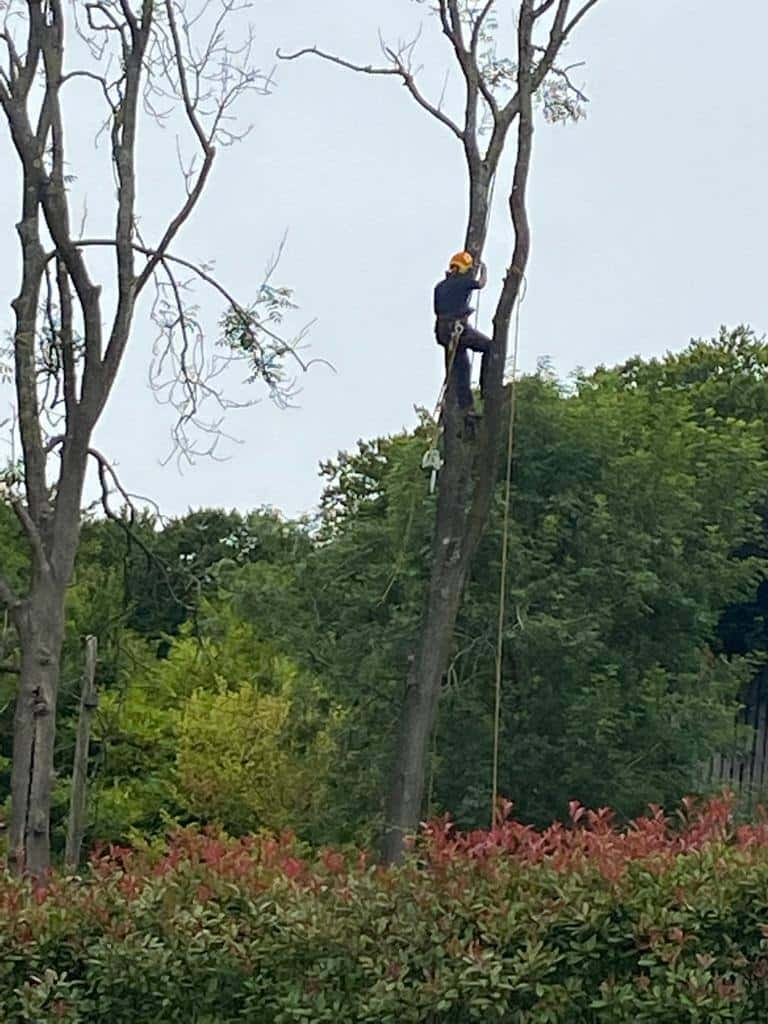Introduction: In the heart of historic preservation districts, where time seems to stand still and the echoes of the past resonate through every cobblestone, trees are silent witnesses to centuries of history. However, in these cherished neighbourhoods, the delicate balance between preserving the past and maintaining the present often includes carefully managing trees. At Lakenheath Tree Surgeons, we understand the significance of tree trimming in historic preservation districts and its pivotal role in preserving these cherished neighbourhoods’ unique character and charm. In this blog post, we’ll explore the importance of tree trimming in historic preservation districts and how our expert services can help maintain the integrity of these treasured landscapes.
1. Protecting Architectural Integrity
In historic preservation districts, trees often intertwine with the architectural fabric of the neighbourhood, framing historic buildings and adding to their visual appeal. However, unchecked growth can obscure architectural features, obstruct sightlines, and even cause damage to historic structures. By carefully trimming trees to maintain their shape and size, we can preserve the architectural integrity of historic buildings and ensure that their unique character remains visible for future generations.
2. Preventing Damage to Historic Landscapes
Trees in historic preservation districts are not just backdrop scenery but integral components of the historic landscape. Overgrown or poorly maintained trees can threaten the integrity of these landscapes, causing damage to historic fences, pathways, and other features. Regular tree trimming helps prevent such damage by keeping trees in check and minimising the risk of branches encroaching on historic structures or pathways.
3. Promoting Tree Health and Longevity
Historic buildings require regular maintenance to ensure their longevity, and so do historic trees. Proper tree trimming promotes healthy growth, reduces the risk of disease or infestation, and prolongs the lifespan of historic trees. By employing expert trimming techniques, we can preserve the beauty and vitality of these living artefacts for generations to come.
4. Balancing Preservation with Modern Needs
Preserving the past does not mean being stuck in time; it means balancing honouring history and meeting the present needs. In historic preservation districts, this balance extends to tree management practices. By carefully assessing the needs of each tree and considering the unique context of the historic landscape, we can tailor our trimming services to strike the perfect balance between preservation and modern-day requirements.
5. Enhancing Public Safety
In addition to preserving historic landscapes, tree trimming in historic preservation districts also plays a crucial role in enhancing public safety. Overgrown branches can pose hazards to pedestrians, obstructing sidewalks or creating visibility issues at intersections. By proactively trimming trees, we can ensure that historic neighbourhoods remain safe and accessible for residents and visitors alike.
Conclusion: reserving the historic character of our neighbourhoods requires a multifaceted approach that includes careful tree management. By preserving architectural integrity, preventing damage to historic landscapes, promoting tree health, and enhancing public safety, experts contribute to the continued vitality and charm of these cherished communities.
Call us on: 01842 771 096
Click here to find out more about Lakenheath Tree Surgeons
Click here to complete our contact form and see how we can help with your tree’s needs.

